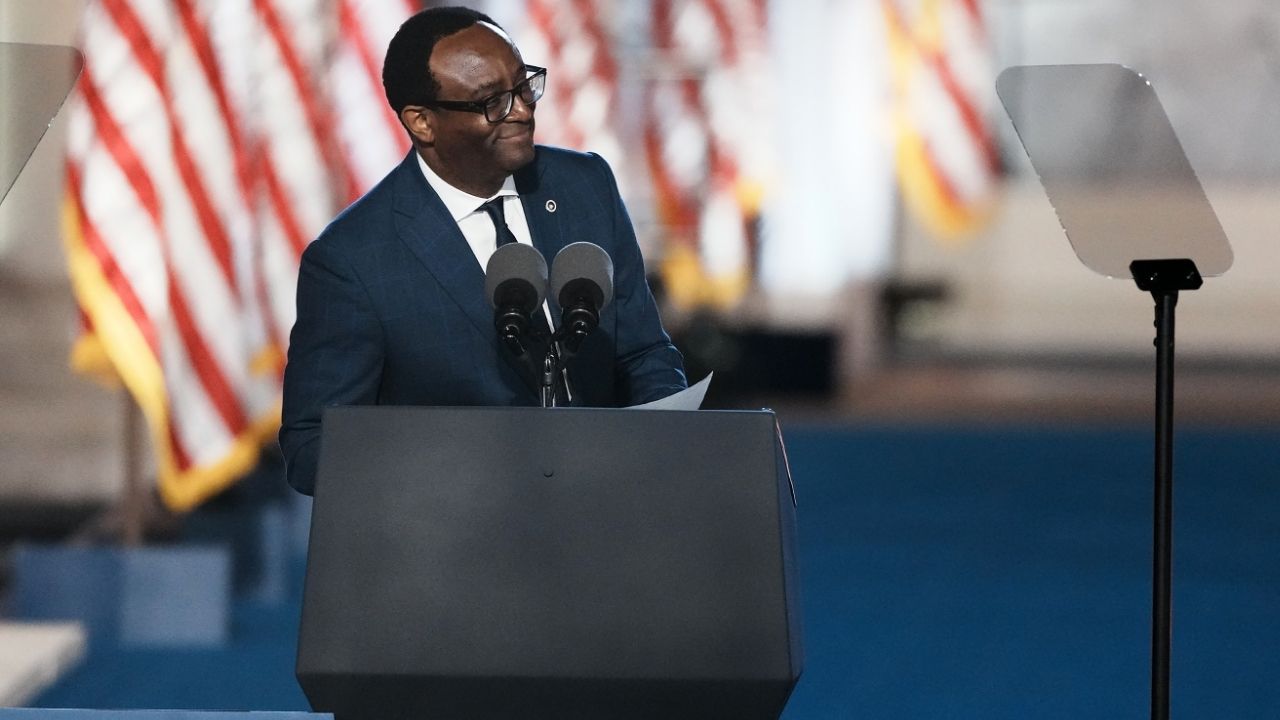Howard University President Ben Vinson III speaks during an election night event for Vice President Kamala Harris', the Democratic presidential nominee, at Howard University in Washington, on Nov. 5, 2024. Howard University said Friday that its president would leave his job at the end of the month after a tenure that lasted only two years, among the shortest stints in the school’s history. (Ruth Fremson/The New York Times)

- Howard University President Ben Vinson III resigns after only two years, one of the shortest presidential tenures in school history.
- His exit follows budget threats from the Trump administration, student billing controversies, and housing frustrations reported by the campus newspaper.
- Former president Wayne A. I. Frederick will serve as interim leader as Howard navigates challenges amid record enrollment and recent achievements.
Share
|
Getting your Trinity Audio player ready...
|
Howard University said Friday that its president would leave his job at the end of the month after a tenure that lasted only two years, among the shortest stints in the school’s history.
The university did not give a reason for the departure of the president, Ben Vinson III. But Howard, the only historically Black university in the nation that is federally chartered, has recently confronted the threat of a vast Trump administration budget cut and faced criticism over student billing troubles.
“We extend our sincere gratitude to Dr. Vinson for his service and leadership as president,” Leslie D. Hale, the chair of Howard’s board of trustees, said in a statement. “We extend our very best wishes to him in his future endeavors.”
In a statement released by Howard, Vinson said he would be “taking some time to be with my family and continue my research activities.”
The board named Dr. Wayne A. I. Frederick, Vinson’s predecessor, as interim president. Howard said in its announcement that Frederick’s “deep institutional knowledge and proven leadership will ensure stability, continuity and continued progress as we navigate complex social challenges and shifts in the higher education landscape and chart the university’s next chapter.”
Although the Trump administration has not punitively targeted Howard as it has other prominent universities, it sought this year to cut the government’s contribution to the school by $64 million, to $240 million. Last month, a Senate committee backed a cut of $50 million, which it attributed to hospital construction funding that was no longer required.
But the committee recoiled at the administration’s proposal to reduce Howard’s operational funding to its 2021 level. The federal appropriation typically accounts for about a quarter of Howard’s revenues.
More recently, according to the campus newspaper The Hilltop, Howard students were infuriated when their account balances surged because of technology-related delays and then were threatened with referrals to collection agencies. Howard insisted that it was “taking active steps to assist students experiencing challenges related to financial aid and account balances.”
The Hilltop has also reported about frustrations related to the number of students being placed in off-campus housing.
In a video message about Vinson’s exit, Hale said the board was aware of “legitimate concerns that have been raised by students regarding student accounts and housing assignments.” Hale stopped short of explicitly connecting those complaints to the leadership change.
Still, Howard, based in Washington, has reveled in recent successes. In February, for example, it became the first HBCU to be designated as a Research One institution in the Carnegie Classification, indicating significant research spending and doctoral degree conferrals. And last year, the school was in the spotlight as a 1986 graduate, Kamala Harris, chose the campus for her election watch party. Harris delivered her concession speech from Howard.
The university’s enrollment has surged in recent years. Last fall, it had close to 15,000 students, including about 11,500 undergraduates. In 2019, the university had less than 10,000 students.
—
This article originally appeared in The New York Times.
By Alan Blinder/Ruth Fremson
c. 2025 The New York Times Company



















